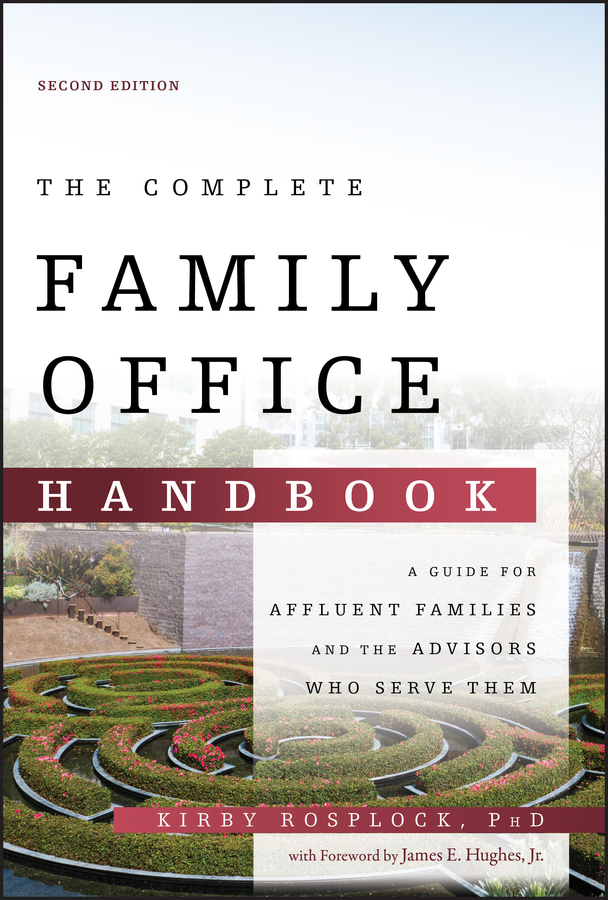What is the impact of the family business on the family office?

Being heavily concentrated in a single area and/or business is often the backstory to the creation of wealth in many family instances. US Trust and Campden Research (1) conducted a longitudinal study on family office investing and found that more than 70% of their sample identified that the source of the family wealth originated from the core family business, with 60% having an ongoing operating business.
Some 46% of the family offices surveyed had between $100 and $500 million in assets under management, and 57% were under 10 years of age. The study found that there appears to be an “operating company effect” whereby those families with operating companies are larger when it comes to assets under management and number of staff, tend to be younger in age, serve fewer family members, direct their investing from in-house, and tend to be more aggressive investors.
Further, those family offices connected to families with an operating company have lower family office cost structures, with high expectations that the office be profitable. There may be something to be said regarding how a privately held business may establish an influence and expectation regarding the performance, management, and function of a family office and its investment performance that outperforms its peers. Similar to the impact of an operating business on the family office, there is a paradigm when the investments become the new business (in the case of the investment office).
Attractions and challenges with embedded family offices
It is simple to see why it would be convenient to have family business and family wealth affairs managed within the family business. First, typically, you have long-tenured, trusted employees who have demonstrated responsibility, loyalty, good judgment and professionalism on behalf of the family business. Second, the business structure and cash flow may be interconnected with the estate planning structures of individual family members. Family business accountants and financial officers may have a strong understanding of these relationships. Third, the family business may house the records and legal documents involved, so confidential family information may be readily accessible. Fourth, the family may not feel that a full-time staffer is required to handle mainly administrative, organisational and investment tasks related to the family. These tend to be the main motivators initially for keeping the wealth management affairs managed internally in the family business. However, there are significant risks and reasons why extensive research by Family Office Exchange (FOX) has been done on the benefits of separating the family business from the management of the financial affairs of the family.
In particular, the need for bifurcation of the business from the family wealth grows as the challenges of strapping family business employees with expanding responsibilities of the wealth put them in an increasingly compromised and conflicted position.
First, an employee's role may evolve and change to include responsibilities that present them with opportunities to know personal information such as social security numbers, account codes, and balances among other highly sensitive information like security codes to residences and passwords to safety deposit boxes. Access to this private data becomes of heightened concern, should an employee overstep their bounds and utilise the information to breach security of the family's assets. Further, this information could be used maliciously in such a way that could jeopardise a family’s reputation, create jealousy, and/or worse yet, present blackmail possibilities for employees who are of a criminal persuasion.
The risks increase dramatically when scope creep occurs for family business employees now tasked with handling family office affairs; especially, when a family business employee is asked to also manage personal financial affairs of one or more family members. During a closed-door gathering of advisers and family office executives on risk management best practices for the family business and family office, an adviser shared an example where a family business employee, who was transitioned over to the family office, had so much access and extensive knowledge of the personal affairs of the family that he blackmailed that family upon his retirement so that he could remain on the payroll.

This instance, albeit shocking, is rarely discussed or shared by families, but happens more frequently than families may want to admit.
Further, when families task employees with management of financial and investment responsibilities, they may be in direct conflict with goals and objectives of the family business. This scenario happens quite frequently, as family members may develop a rapport or connection with their accountant, financial office, and/or administrative staff in the family business and may at first make small, seemingly insignificant requests and then increasingly make requests to handle personal affairs such as record keeping, accounting, bill pay, filing and administration, and dividend disbursements, among other common tasks. This can lead to employees feeling pulled in opposite directions when or if the objectives of an individual family branch are not aligned with the family business objectives.
This is the quintessential example of when the family business employee becomes triangulated and faced with serving two equally important masters—the family business and the individual family members. This is an eventual “lose–lose proposition” for the employee. The risks are that they fail to fulfil their role within the organisation to meet expected performance benchmarks and, equally dismal, they are unable to meet the family member's expectation for support that is beyond their job description.
The family owners are conflicting with their employees who may have personal ties and deep respect for the family member, and consequently do not know how to say politely and respectfully, “I am unable to perform this function for you under my current job description and requirements.” And, truth be told, the personal needs and requests from a family member may appear minor and insignificant at first to the employee. However, compounded across years and increasing numbers of family members making those requests, before the employee knows it, she or he may be using 10 to 30% or more of his or her time on these extraneous tasks.
 Separating the family office from the family business
Separating the family office from the family business
There are also families with successful operating businesses, who intentionally create a separate entity, such as a single family office, to manage the wealth. They may task key employees to shift functions from the day-to-day family business operations to oversee or manage the family office function. It is important to differentiate the evolution of this style of family office, as a family clearly views the need to bifurcate the responsibilities in a separate fashion from the management of the business. The decision to establish a separate home for the wealth to be managed and organised often is motivated by specific drivers, such as diversification of the assets beyond the concentrated scope of the family business, tax efficiencies, or asset protection measures, for example.
In the instance of one family enterprise, there was a holding company with a myriad of sub-companies underneath. The family was in the process of culling some of the underlying limited liability corporations in order to exit from certain marketplaces and to strategically focus on other core lines of business. Although the family could have redeployed those assets back into the operating businesses, they determined that their businesses did not need additional capitalisation. Further, the more senior members of the family were looking for ways to garner liquidity for retirement, gifting, and legacy planning.
By redeploying the assets into a family office structure, individual shareholders were able to access capital, additional financial stability could be created for more senior family members, and the core family business holding could be diversified. Further, they were able to reduce their risk exposure of being completely captive in illiquid, privately held securities. They were additionally able to create a wealth management process and mechanism for future liquidity events, so the planning, implementation, and execution of wealth management solutions for the family were less cumbersome.
Challenges establishing a family office separate from the family business also abound and not all families may be up for the task. First, families with a weak sense of family cohesion or affinity may have greater difficulties enticing family members, who are or were shareholders of the family business to “double down” on their “familiness,” or their sense of family belonging and togetherness, by managing their wealth together under a family office umbrella. Second, families with varying levels of financial wealth may also be at odds to strike a balance for establishing a family office.
_3.jpg) One family I have come to know over the years faced this exact challenge when a portion of their business was sold, leaving them with several hundred million dollars of liquidity. They had certain branches of the family well-endowed through concentration of ownership over the decades, leaving two-thirds of the wealth concentrated in one branch and the remainder split among several other branches. Compounding the gap of means, the wealth in the “have-nots” branch was further fractionalised through dynasty trusts. As a result, the scale of wealth from the “haves” branch provided opportunities for more complex investment structures and investment planning that simply was not of interest to the other branches. This divide of investment strategy, coupled with very different lifestyle and legacy planning, made the notion of forming a single family office to meet the needs of the broader family a pariah.
One family I have come to know over the years faced this exact challenge when a portion of their business was sold, leaving them with several hundred million dollars of liquidity. They had certain branches of the family well-endowed through concentration of ownership over the decades, leaving two-thirds of the wealth concentrated in one branch and the remainder split among several other branches. Compounding the gap of means, the wealth in the “have-nots” branch was further fractionalised through dynasty trusts. As a result, the scale of wealth from the “haves” branch provided opportunities for more complex investment structures and investment planning that simply was not of interest to the other branches. This divide of investment strategy, coupled with very different lifestyle and legacy planning, made the notion of forming a single family office to meet the needs of the broader family a pariah.
(1) The US Trust/Campden Research North America Family Office Study, presented to the Institute for Private Investors Winter Forum 2013, San Francisco, California.
Extracted with permission from The Complete Family Office Handbook: A Guide for Affluent Families and the Advisers Who Serve Them, 2nd Edition by Kirby Rosplock.







